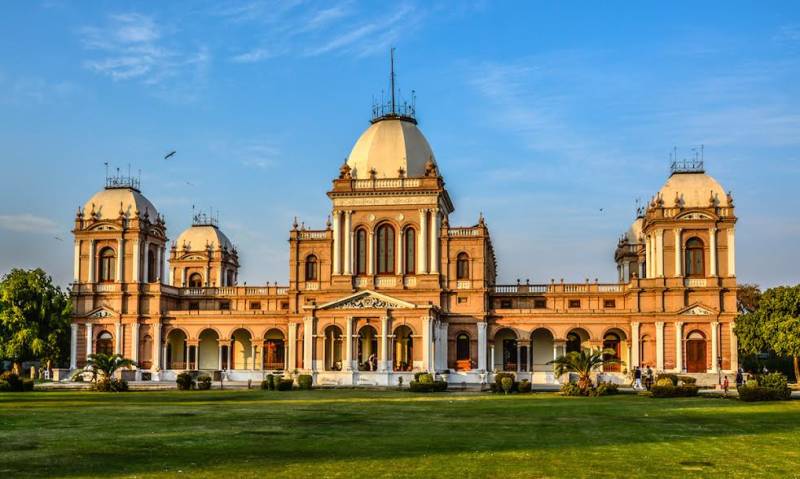The sun was setting and we were on our way to Bahawalpur. My guide Suhail had an excellent playlist of old Hindi songs chalte chalte yunhi koi mil gaya tha, ye mera deewanapan hai, janay wo kese log they, raina beeti jae and so on. Music and the evening air were intoxicating and the magic went on until we reached Bahawalpur. In the scarce daylight, we caught a glimpse of Noor Mahal, the historical Nawabi palace which has become a symbol of Bahawalpur.
Noor Mahal presents a complete contrast from the desolation of Sadiqgarh Palace. Pakistan military bought the palace from the royal family a couple of decades ago. Since then it has been well preserved and now converted into a museum. Noor Mahal was constructed in 1895 by Nawab Sadiq the fourth for his beloved wife Noor Begum. The Nawab is also known in history as Shahjahan of Bahawalpur for his extensive architectural legacy. As the legend goes, Noor Begum stayed at the palace for just one night. The next morning, she saw a graveyard from the palace balcony. Considering it a bad omen, she refused to reside at Noor Mahal. It remained closed for a few years, after which the stately home was used only for state functions or as a guest house.
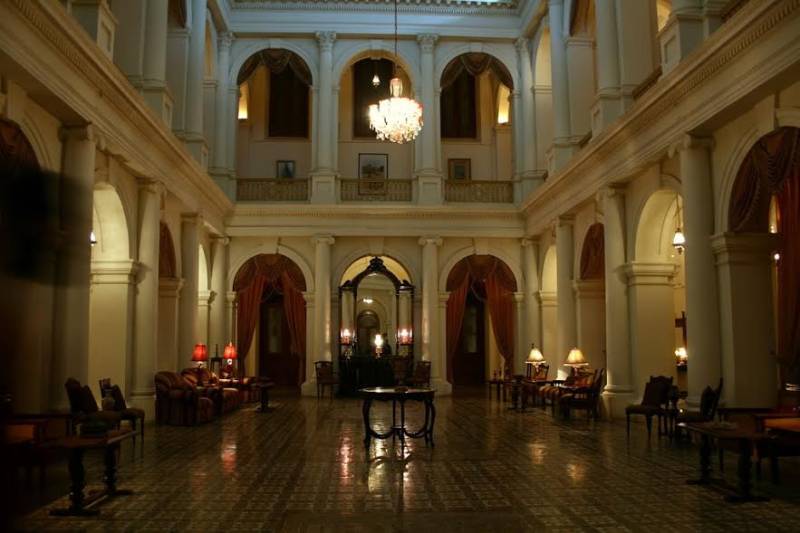
Durbar hall
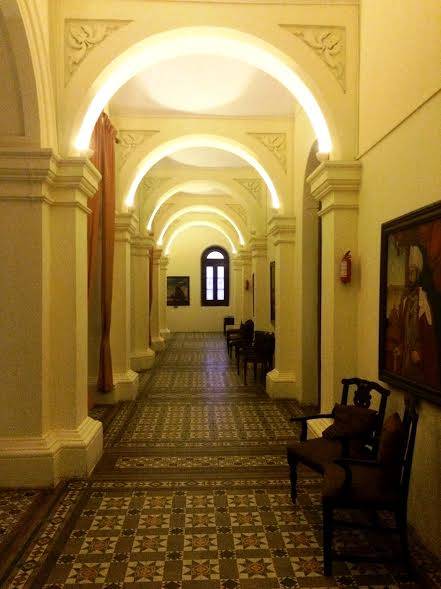
Palace corridors
There’s a beautifully maintained park spanning over acres around Noor Mahal. After sunset, the palace was beautifully illuminated in soft yellow light giving it the most impressive royal look. Its design is somewhat similar to Sadiqgarh palace except that its structure is smaller. In the entrance hall, valuable antiques of the princely state of Bahawalpur like coins, stamps, medals, swords, documents etc were displayed in glass showcases. An old piano was placed in one of the arches opening into durbar hall. The color of its keys had faded and the wooden frame had a beautiful rustic look. The durbar hall at Noor Mahal also boasts a great mirror but it is attached to a wooden cabinet and much smaller than the grand mirror at Sadiqgarh. The hall is most tastefully decorated with antique furniture and paintings. Three huge chandeliers are hanging from its recently refurbished ceiling which is a work of art. Corridors around the hall have been converted into picture galleries. In every arch there’s a portrait of a Nawab or a painting showing some historical moment or general landscape of Bahawalpur. There’s a huge painting of the last Nawab on the first floor central arch right in front of the throne. Lighting has enhanced the beauty of the palace. Floors are a masterpiece of stonework. Each standard square is made up of twenty one small geometric pieces of stone. Noor Mahal has been redecorated with great historical and artistic sensibility.
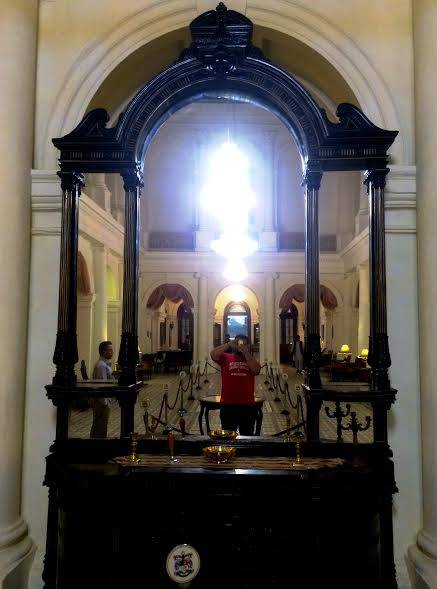
The grand mirror
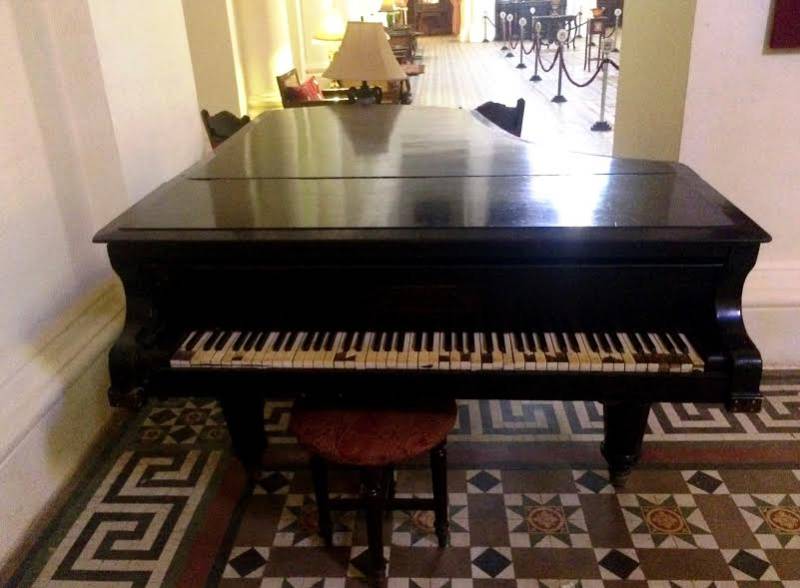
Antique piano at Noor Mahal
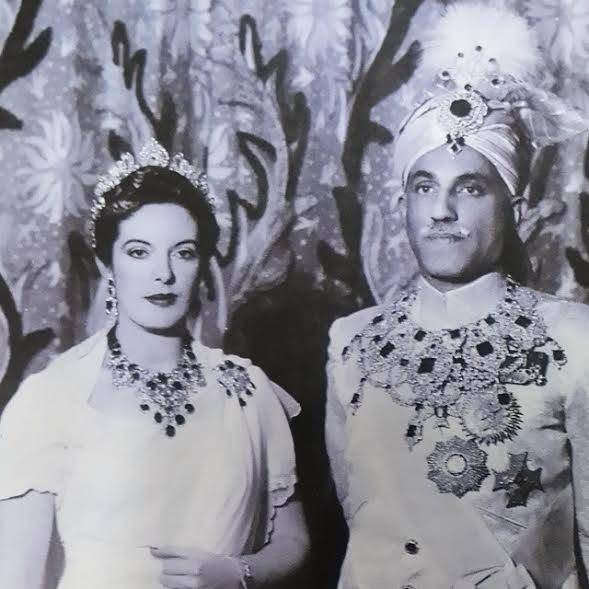
The last Nawab with his British wife Linda Sayce
The adjoining hall, which must have been used as dining area, now displays a priceless collection of historical pictures of the princely state on its walls. There are rows of black and white pictures showing Noor Mahal hosting lavish state functions, Sadiqgarh palace at the peak of its splendor, hosting history makers like Quaid-e-Azam Muhammad Ali Jinnah, Fatima Jinnah, Liaqat Ali Khan, Shah Muhammad Reza Pahlavi of Iran, Shah Faisal of the Hashemite Kingdom of Iraq, Pandit Jawaharlal Nehru, President Iskander Mirza, President Gen. Ayub Khan, British viceroys and governors and Maharajas and Nawabs of other princely states. One picture shows the last Nawab’s British wife in conversation with President Gen. Ayub Khan, in another Maharaja Kapurthala is strolling in the palace gardens with other princes. Other rooms of Noor Mahal are out of bound for public.
There was a small passage in the foundations of the palace leading inside an underground tunnel. Suhail told me that this tunnel which opens at the back of the palace was a mechanism devised for proper ventilation and to keep the water hot or cold as per requirement. It is a most eccentric structure. Palace administration had kept it clean, maintained and open for public. Across the beautiful circular garden in front of the palace there is a view point. It offers a magnificent view of Noor Mahal showered in light against dark of the night. Administration also runs an open air restaurant in the palace grounds. We had a simple dinner and relaxed for some time while appreciating beautiful view of the palace. The day had been warm but it had grown cold by the night.
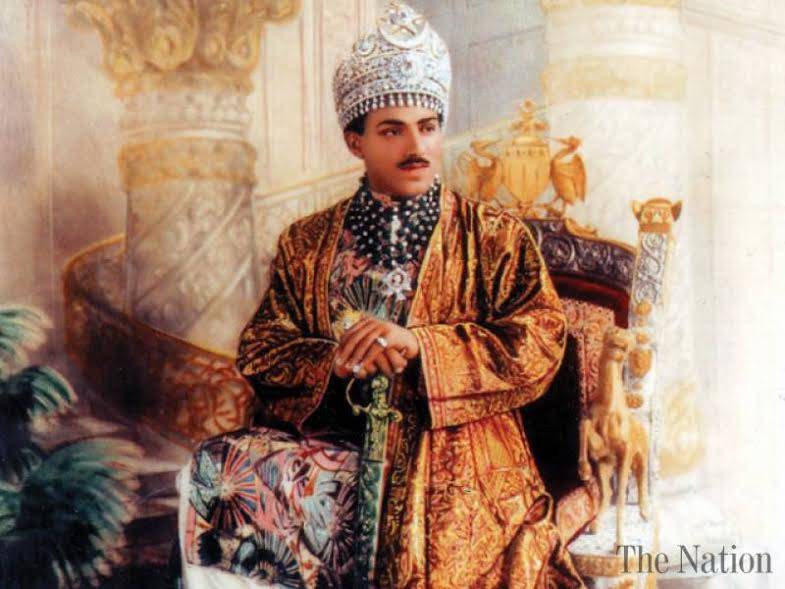
Sir Sadiq Muhammad Khan Abbasi, Last Nawab of Bahawalpur
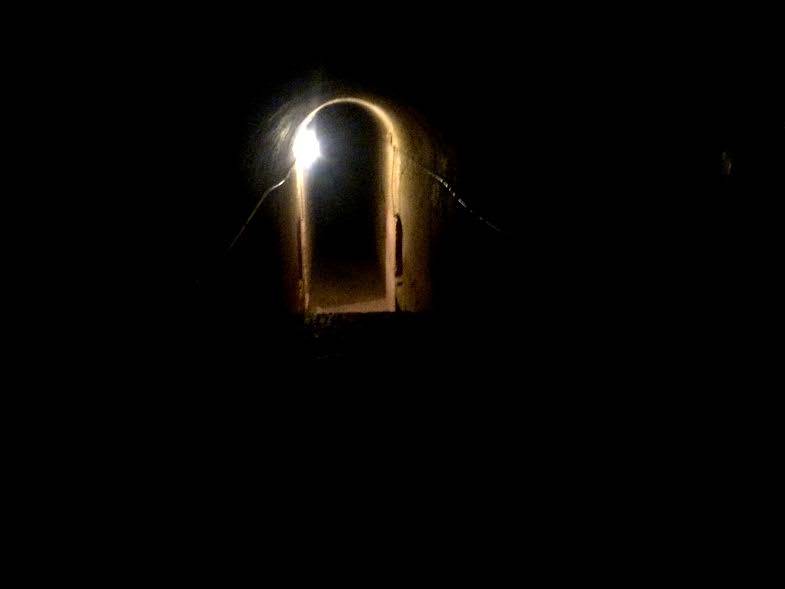
Tunnel beneath Noor Mahal
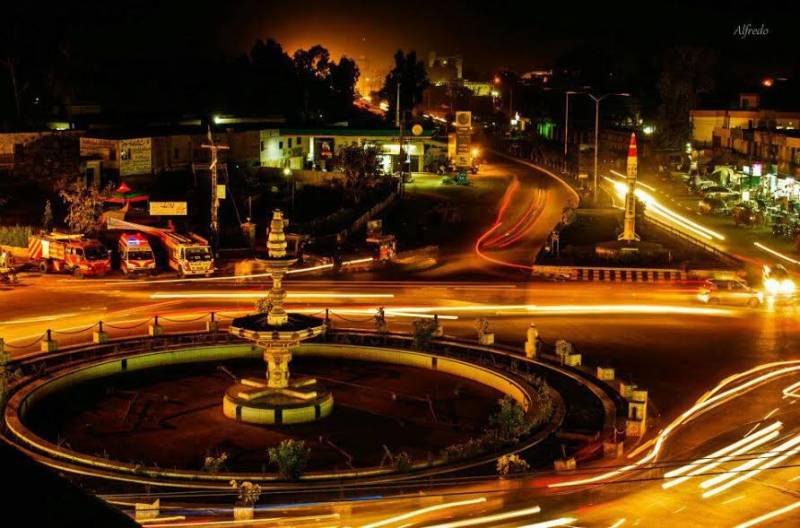
Victorian fountain at Bahawalpur
The night had fallen and I had just a couple of hours more in Bahawalpur. I asked Suhail to drop me at the bus station but he insisted on keeping me company and to show me a little bit more of the city in whatever little time we had left. So, we went on a tour to downtown. Bahawalpur is beautiful and a very peaceful city. But then every small city would seem peaceful as compared to the traffic and clatter of Lahore. The city is dotted with landmarks of Nawabi era. Most of the monuments are well preserved and looked after and unlike monuments in Lahore, they are illuminated at night. The city’s landmark is its grand fountain installed in a huge roundabout in front of Ahmedpuri gate. The fountain was a gift from Queen Victoria. It was first installed in the gardens of Sadiqgarh Palace but was moved to its present location in the city on Nawab’s orders in 1880. It has been recently restored and preserved. The running fountain makes the night of Bahawalpur more beautiful. All the gates of the walled city have also been restored recently and add to the charm of the city. Out of darkness, impressive structures of central library and Victoria hospital stood out illuminated in flood lights. A vintage car of Nawab Sahab is on display outside Bahawalpur museum. A family was taking pictures with it. The children opened the back door, climbed over its leather seats and took the pleasure of nawabi for a while. We also came across the grand Eidgah in the city. Its minarets and canopies were huge and looked like animations from the legend of Aladdin.
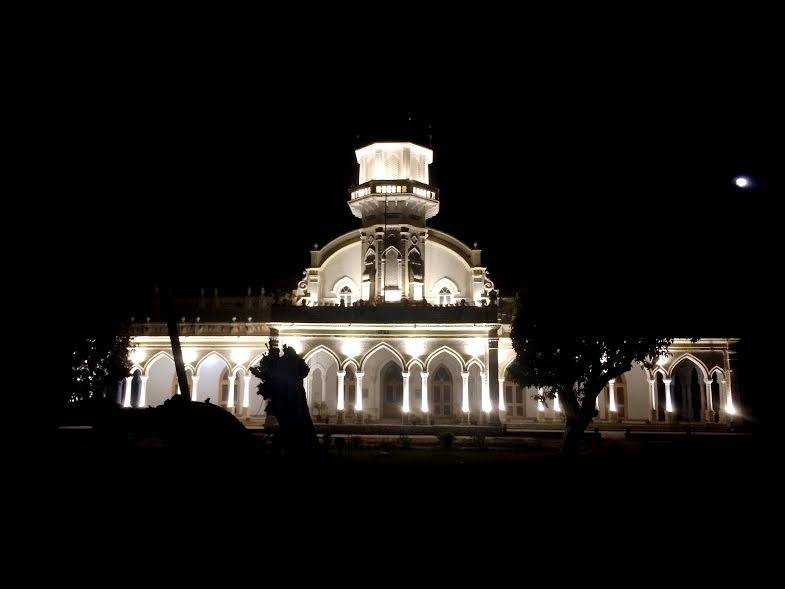
Illuminated building of the central library
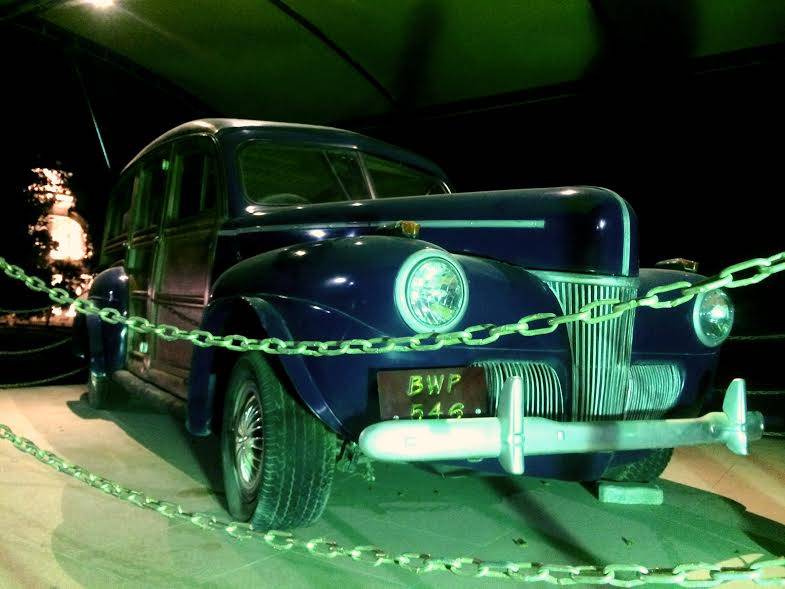
Nawab Sahab's car on display outside Bahawalpur museum
Suhail had one last wonder in his pocket which he wanted to show me. We parked the car in a market inside Ahmedpuri gate and took a walk. At this time of the night, many shops were closed but many other were still open and flooded in bright lights exhibiting their merchandise. There were crowds of men on food stalls and this hustle and bustle was so full of life. The bazaars became narrower and busier until we stopped at a big white gate. It was entrance to Jamia Masjid Sadiq, a beautiful landmark in the heart of the city. It was constructed by the last Nawab in late 1940s. The mosque was closed at this hour but Suhail was the key to every lock in the world. The old caretaker let us in and we found ourselves in the forecourt of the mosque. A high staircase led to a handsome arched entrance which opened up to the magnificent structure and the huge courtyard of the mosque constructed entirely out of white marble. There was peace and serenity inside the mosque. Sounds from surrounding bazaars had faded in the background and the mosque was glowing in moonlight. One unique aspect of the mosque is that it has no domes. There are seven arches in the facade and four minarets of different sizes on all corners of the main hall. The central arch, which is greater than other arches, is a wonderful work of art. Interior of the arch is decorated with Persian geometric designs. The exterior has exquisite calligraphy, marble carving and pietra dura work. The entire façade is decorated like a jewel. Full moon was reflecting on the courtyard and through ventilators I could see a colorful world of narrow bazaars beneath the mosque. Jamia Masjid Sadiq is one of the most beautiful mosques in Pakistan.
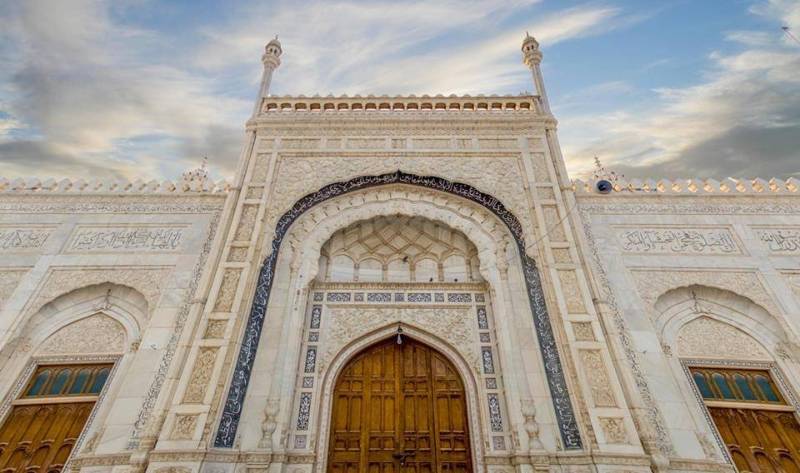
The main arch of Jamia Masjid Sadiq
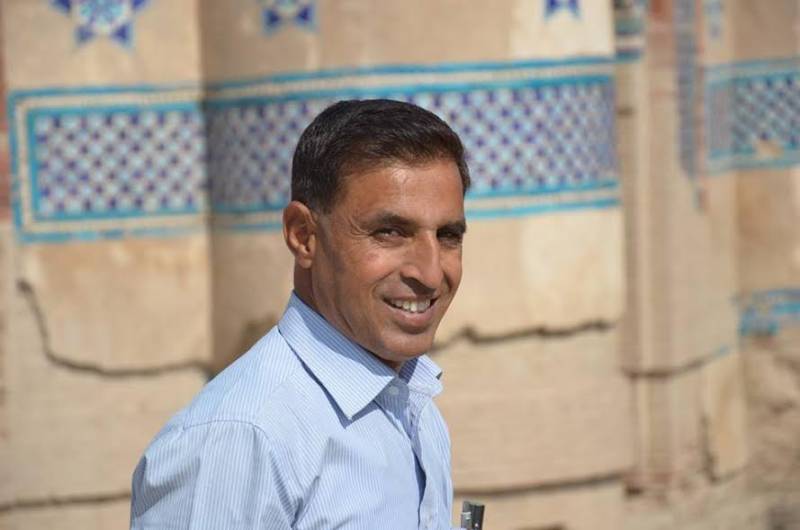
The tourist guide, Suhail
Bahawalpur has a magic of its own. Its history, heritage, architecture, landscape, culture and people are unique and amazing. If developed properly, the place has great potential for tourism. Personally, I’ve fallen in love with Bahawalpur and this is definitely not my last visit. To me, today’s Nawab of Bahawalpur is Suhail, the excellent guide who led me through wonders of Bahawalpur’s history and heritage, unlocked palaces, tombs and mosques which are otherwise out of bound for public, served me in the most courteous and hospitable way and introduced me to a world of beauty in just a few hours. I can’t thank him enough. Pakistan owes its slowly flourishing tourism to enterprising individuals like Suhail who are doing their best in limited resources and difficult circumstances.
Until I hit the road again…

